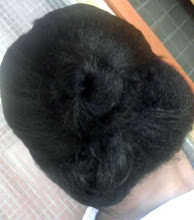Just as there a variety of hair textures, the various skin textures and types do matter when it comes to how a product or ingredients will fare with your skin. Take retinol for example. The first thing most people think about is the peeling effect. However, you'll be amazed to know that others will equally not have that effect!
With my own experience with The Ordinary vitamin c 23%suspension +HA Spheres, I've come to the realisation that jumping on bandwagons within the beauty community is comparable to the hair community . Whereas some hate the vitamin c suspension serum, my skin had no qualms when applied.
On the other hand, my skin might or may not fare so well the BHA peeling solution because I am yet to use it. You won't know until you try it. Usually, one ingredient or a few might be the reason something will or won't work. Although my skin is OK with lactic acid, I don't know if a product which has it alongside other acids would be friendly for me. I can't tell until I try it.
Generally though, once you are able to identify one or two ingredients which work or don't work, it's easy to determine how your skin would react to other brands with such ingredients.
What makes a product bad? The ingredient your skin doesn't like. So, rather than focusing on labelling and tagging a brand as bad, identify the ingredients your skin hate! Whereas others flee from Retinol, I have friends who explore every brand!
Always check reviews before splurging on products. If you are allergic to bee pollen, you will be cautious when selecting anything related to that ingredient. The same might work in your favour if you skin is like mine and will take any thing thrown on it!
The process of finding what works or doesn't in skin care also boils down to the ingredients hence just as you check for the ingredients in hair products, do the same for skin. Read about each ingredient to know the pros and cons before you purchase it.
Personally, I find it a joy working with customers who are willing to read about ingredients in the products at the shop to make a better choice.
Was this helpful? Share with friends!


Comments
Post a Comment
Speak your mind; I love to hear from you!